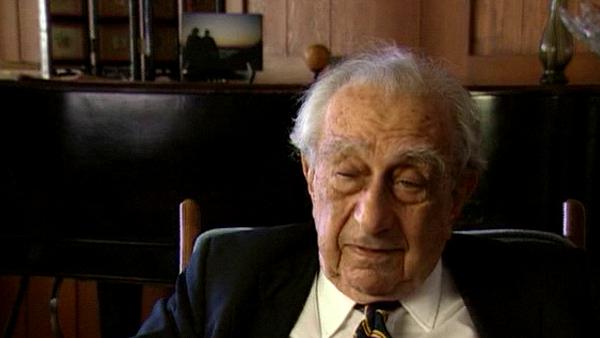NEXT STORY

A ban on testing
RELATED STORIES

NEXT STORY

A ban on testing
RELATED STORIES


|
Views | Duration | |
|---|---|---|---|
| 121. Szilárd's help with family (Part 2) | 357 | 03:51 | |
| 122. Attempts to make nuclear explosives more effective | 122 | 02:51 | |
| 123. The Pre-mortem and Post-mortem committees | 104 | 05:36 | |
| 124. A miscalculation in a test leading to a mass fear of radioactivity | 123 | 04:20 | |
| 125. Misconceptions about radiation | 186 | 06:36 | |
| 126. The first major success at Livermore (Part 1) | 109 | 04:15 | |
| 127. The first major success at Livermore (Part 2) | 103 | 02:59 | |
| 128. Useful size of nuclear weapons | 139 | 03:34 | |
| 129. A ban on testing | 100 | 04:05 | |
| 130. The idea of underground testing | 101 | 05:43 |


The late Hungarian-American physicist Edward Teller helped to develop the atomic bomb and provided the theoretical framework for the hydrogen bomb. During his long and sometimes controversial career he was a staunch advocate of nuclear power and also of a strong defence policy, calling for the development of advanced thermonuclear weapons.
Title: Useful size of nuclear weapons
Listeners: John H. Nuckolls
John H. Nuckolls was Director of the Lawrence Livermore National Laboratory from 1988 to 1994. He joined the Laboratory in 1955, 3 years after its establishment, with a masters degree in physics from Columbia. He rose to become the Laboratory's Associate Director for Physics before his appointment as Director in 1988.
Nuckolls, a laser fusion and nuclear weapons physicist, helped pioneer the use of computers to understand and simulate physics phenomena at extremes of temperature, density and short time scales. He is internationally recognised for his work in the development and control of nuclear explosions and as a pioneer in the development of laser fusion.
Duration: 3 minutes, 35 seconds
Date story recorded: June 1996
Date story went live: 29 September 2010